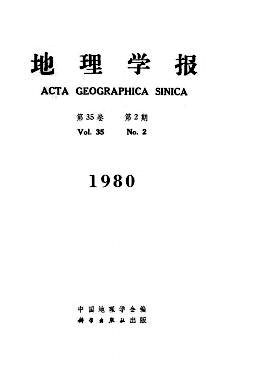Li Chunfen ( Chun-fen Lee), Wand Enyong, Zhang Tongzhu, Wu Jihua, Liu Shuren, Chen Ershou
Since the founding of the People’s Republie of China, geographical education inuniversities, colleges and sohools has made great achievements, particularly in esta-blishing geography departments, setting up specialties, training of teachers and geo-graphical scientists, compiling and editing teaching materials and text books improv-ing teaching quality, carrying out scientific research and popularizing geographicalknowledge, etc. For the sustained and healthy development in the years to come,especially at a time when the long-expected four moderizations are being carriedon today, it is neeessary to look back on the course of development and summarizethe gains and losses.The first department of geoscience was founded in 1919 in the Higher NormalCollege of Nanking (now the University of Nanking) with Dr. Co-ching Chu, aclimatologist and the late president of the Geographical Society of China, as the head.One of its three sections was geography. In the 1920 s and 1930 s, a number of de-partments were established suceessively. From then till liberation in 1949, the depart-ments were quite small, generally with a staff about 10 and an enrollment not morethan 50. In a word, in old China, the development of geography was rather slow, mostof the graduate students engaged in teaching in middle schools, bringing little intoplay in national productive construction.Since liberation in 1949 China has entereda new stage of development in socialist revolution and socialist construction. By 1952, in order to adapt to the needs of national construction, the institutions of higherlearning underwent a nation-wide adjustment. Geography departments fell into twocategories, one in the comprensive university and the other in normal college (univer-sity). The main task of the former is to train scientific workers, thereas the latter to trainteachers for the middle schools. Since then, great changes have occurred in geographyin higher education. These changes arose from the great expansion of the teaching ofthe subject and the carrying out of research works. A recent list gives about 35departments, most of them with a size that would have been undreamed of in thepreliberation period. Students graduated amounts to ahout 40,000. As a result of theemphasis laid upon the adaptation to the needs of the related government depart-ments and production units, there emerged in comprehensive universities newspecialties in respect of both research and teaching interests. It is noteworthy thatthere came up a distinct swing in favor of the systematic approaches, evident is bothphysical geography and economic geography. The courses offered were to a greaterextent deepened and broadened in contents than before. But it must be pointed outthat there was little regard to cultural geography and an increasing gap betweenphysical and economic geography. In addition, the idea of geography as a "pointof view" as an integrating and synthesizing diseipline were loaing ground. Regionalgeography was deprived of its position as the core of geography and even disappearedin eurriculum. In comprehensive sinivessities as well as in normal colleges importantchanges also reflects in the strengthening of field training. Both senior and juniorstudents were given a specific length of time for fieldwork training including theproductive peactice in connection with the tasks designated by the related govern-ment departments or other productive units. The teachers and senior students usuallytake the occasion of productive practice to participate in comprehensive expeditions,resources surveys, drainage-area planning, agricultural regionalization, desert control,atlas editing, etc. These aetivities are of great importance not only to carrying outresearch works designated but to the promotion of teaching quality as well. In normalcolleges students at the fourth year take 4-6 weeks’ teaching praetice instead. Atpresent, in both universities and colle
